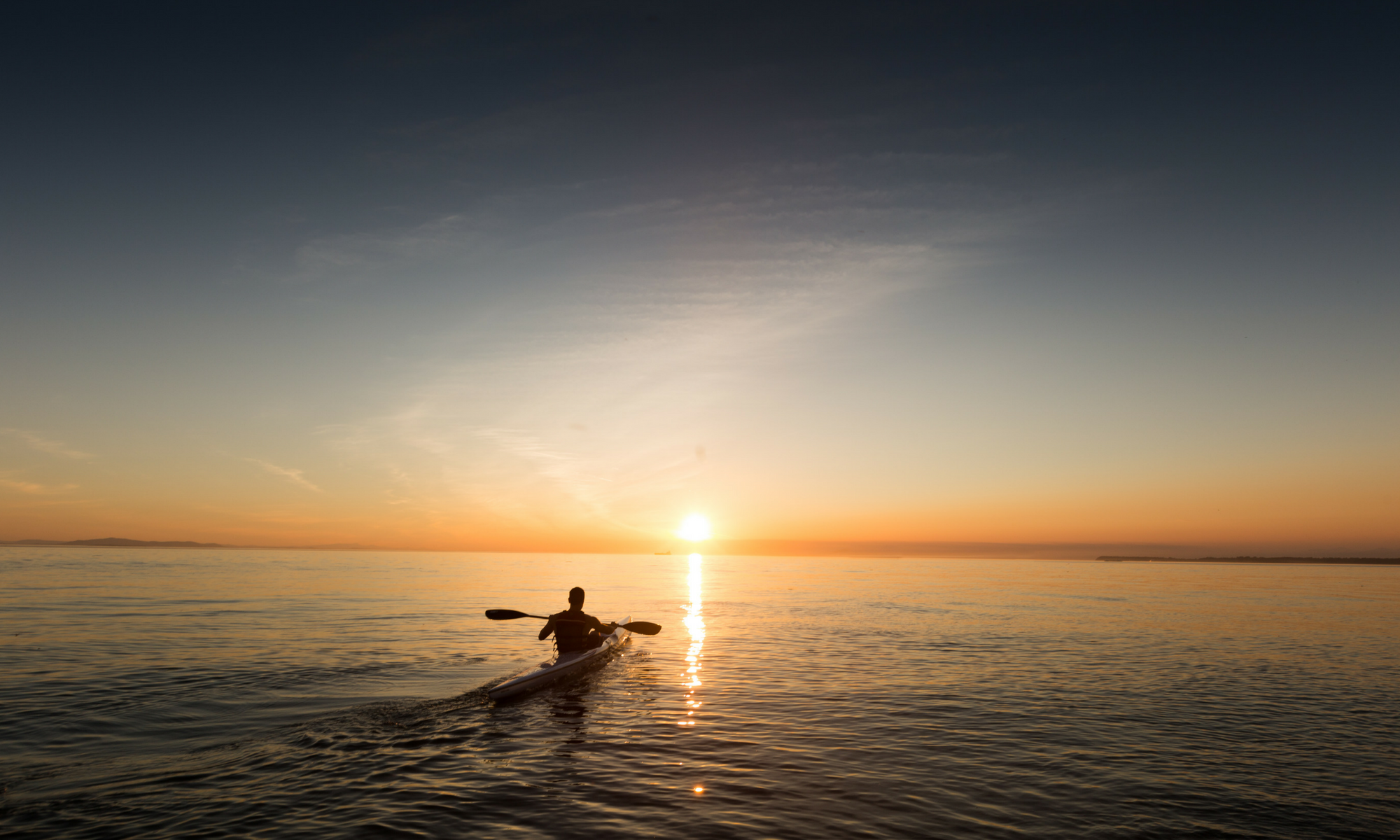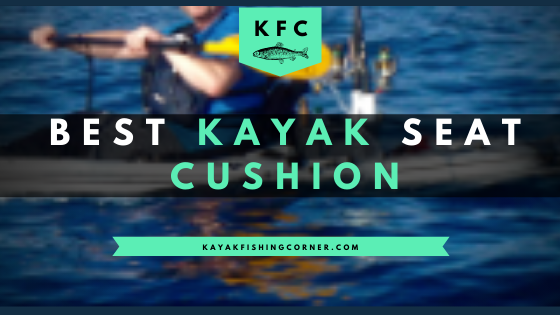Jump Ahead To:
BEST KAYAK SEAT CUSHION: INTRO
Is your kayak seat getting hot and damp with all your sweat? Maybe it is causing you pain due to its materials? Not very much fun when you are trying to focus on catching some fish in your kayak! Consider investing in the Best Kayak Seat Cushion! These cushions are made for outdoor use, including kayak fishing, and to keep you cool in the summer and warm in the winter! What more could you ask for?!
Best Kayak Seat Cushion – Overview:

Please note: This post contains affiliate links. An affiliate link means that we may earn advertising/referral fees if you make a purchase through our links.
Kayak seat cushions, as a general rule, have sparse or poor reviews. This is why I’ve decided to compile a review on the Best Kayak Seat Cushion, which also includes a ton of other information relates to kayak seats in general! This guide has been divided into several sections, each serving a different purpose. Don’t worry, we stay nice and organized so everything is easy to follow!
In the first section, I’ve introduced the basic concept of kayak seat cushions. You’ll learn here why you should consider a cushion, and what you may be risking if you decide to go without one (especially if you haven’t learned how to use kayak outriggers). The second section deals with the various ways to use the cushion – after all, a kayak seat cushion isn’t much good if you don’t know how to use it! I’ve also included several precautionary tips on taking care of your cushion – protect your investment!

The third section is mainly about what you should consider when buying kayak seat cushions. Pay close attention here as I’ve explained the difference between open and closed-cell foams. Understanding these important features will help you become a knowledgeable consumer so you can make better purchase decisions!
Lastly, I’ve included a link to my favorite kayak seat cushion. I chose this mainly because it fits everything I went over in the above sections and because it is IDEAL for kayak fishing purposes – it is surely the Best Kayak Seat Cushion!
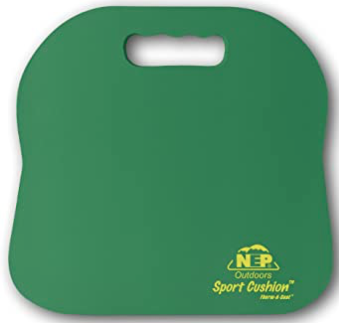
I have summarized my thoughts on the product in the “My Own Experience” section. It is where you’ll find the pros and cons in a bullet format, for ease of reading and sifting. Hopefully you can learn a thing or two from my experiences – I like learning from others, perhaps you do too!
So let’s get started with the guide!
Best Kayak Seat Cushion – Basics:

Please Note: As an Amazon Associate, I earn from qualifying purchases.
Shortcut to the Best Kayak Seat Cushion Review
Sitting on a kayak seat for an extended period can be strenuous and exhausting, no matter how comfortable the seat is. Your back will get sweaty, and the seat will either heat up or get cold (depends on the weather). Kayak seats certainly aren’t perfect, and that’s why we have special kayak cushions to go along with them!
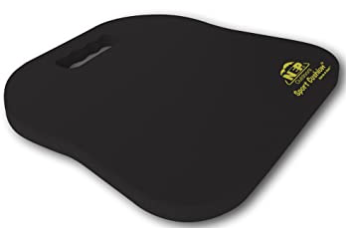
Kayak cushions aren’t really called “kayak cushions.” You’ll find them labeled as “outdoor/sports cushions” or even “stadium cushions.” They provide high thermal stability and a cozier base. They use special technology that wicks away heat and moisture and cools your back and butt.
The best kayak seat cushion should bring back the loft in your seat and ease pain in your tail bone. In this way, you save the money that you would’ve spent on a new kayak seat.
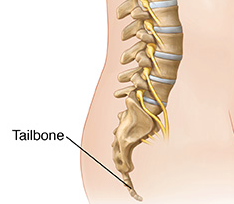
But not all cushions are made the same. Some are more focused on heat dissipation, while others are directed towards providing more comfort. If you’re looking just to replace a saggy kayak seat, buy one that provides more comfort. If you usually end up with a sweaty back, go for a heat-dissipating cushion. Every kayak fishermen is different, and therefore each will require different features from his or her own kayak cushion!
You’ll need to take care of your cushion by regularly wiping it and keeping it in a cool, dry place. They don’t require a lot of maintenance other than that unless you tend to get them soaked with seawater often. Salts can crystallize, which can become the breeding grounds for fungus. Better to keep the kayak cushion free from saltwater!
How to Use a Kayak Seat Cushion

Using a seat cushion atop your regular seat isn’t hard. Simply pop the cushion into place and sit on it! How, if only everything was that easy, right? However, it’s the handling and care that needs to be checked. Here’s how you can use a kayak seat cushion and how to take care of it:
- Use your seat cushion above your old cushion to get more elevation.
- Tuck the cushion behind your back, or open up the backrest and sew the cushion inside.
- You can also use the cushion only, but if it’s thin, then the body of the kayak will pierce into your hips.
- Never remove the protective covering of the cushion or subject it to trauma.
- You don’t want to do that since the entire premise of closed-cell foam is to remain tightly packed.
- Never rinse with water, even if the cushion is waterproof because there is usually a limit to the waterproofing, and once water gets in, it can wreak havoc (if not totally ruin the cushion).
- Instead, use a wipe to wipe down the cushion with warm water.
- It will prevent any water from getting in, and most cushions are easy to wipe.
- Always store the cushion in a cool and dry place, as moisture and temperature invite microbes.
- Lastly, use the carry bag or zipper (if included) to store the cushion.
Side Note: If you are concerned with your comfort on the water, you should consider the benefits that a kayak outrigger has to offer (just make sure you get one of the 5 best kayak outriggers). Also, if you are here looking for comfort, make sure you get the right size of Kayak Fishing Paddle and use Kayak Paddle Grip Tape to avoid getting blisters!
Best Kayak Seat Cushion – Important Features:

Size:
Size is the first and most obvious factor you should consider. You should measure the width of your kayak seat and buy a cushion that fits that. Most sports cushions are designed to accommodate people of all sizes. So it may be that a cushion you like doesn’t fit your kayak. In that case, look for a smaller version of the cushion, or consider folding it from the sides.
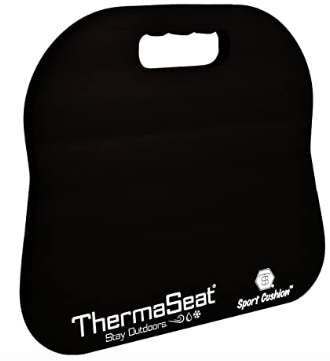
Most cushions are square-shaped, with each side about 12-15 inches long. This size is suitable to support most people. And it can fit inside a standard sit-on-top or sit-in fishing kayaks.
Open-Cell Or Closed-Cell Foam:
Many cushions are made from closed-cell foam. Closed-cell foam is the best for its waterproof abilities and its comfort. This type of foam is harder than open-cell foams and lies in the Medium-Firm range. Since the “cells” are closer together, no water can be absorbed. It makes closed-cell the best for resisting moisture.
It not only accounts for a more comfortable experience but also reduces sweat damage and prevent salts from seeping in. However, some salts may accumulate on the surface. Along with that, closed-cell foam also has a higher R-Value (or heat flow rating), which means it stays cool for longer (perfect for hot summer days).

Open-cell foam can be considered if you’re going for a softer cushion. It does provide insulation, but not to the same extent as closed-cell foam. And it retains more water, requiring more maintenance and cleaning. Some manufacturers pair open-cell foams with vinyl covers, adding some level of waterproofing.
Thickness:
The thickness of the cushion will determine how “comfy” it feels. Sometimes, thin cushions can allow the body of the kayak to stab your hip bones. Ouch! The thickest option for open-cell foams is 2.5 inches thick. However, open-cell foams aren’t recommended for use with fishing kayaks, unless you’re using a vinyl-covered version.
Open-cell seat cushions can range from 1 to 2.5 inches in thickness. The close-cell foam cushions, unfortunately, are only 1-inch thick, or less. It means you have to buy two of the cushions to get a decent loft. As stated, kayak seats becoming saggy is one of the main reasons people prefer a separate seat cushion.
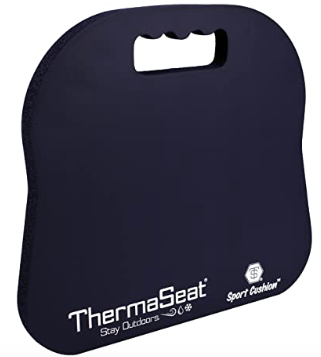
However, since close-cell cushions are thin, there is no margin for sagginess. So you can see the thinness as a “pro”, instead of a “con, in that way. Plus, they are more firm and thus hold more weight. Some can hold even up to 300 pounds or more. Maybe I will start eating at the buffet more often….
Cover Material:
Two materials are popular for kayak seat cushions: polyester and vinyl. Polyester is more comfortable and feels softer against the skin. It is particularly useful when you’re fishing or kayaking with a bareback (no independent seat).
Vinyl will rub against your back and can cause rashes in some cases. However, vinyl is more water-resistant, so it may add a bit more waterproofing to your cushion. Although if you have a close-cell foam cushion, you won’t need vinyl covers. These are best used on open-cell foam.

A third option is a non-woven polypropylene, which is preferred for its low price. It’s usually used on open-cell foam. But anyone on a decent budget can afford polyester or vinyl – its well worth the few extra dollars.
Cold Weather Performance:
Your kayak cushion shouldn’t perform well in the heat only. After all, kayak fishing is a year round activity!! It should have some cold-endurance as well!! What this means is that the cushion shouldn’t get hard when exposed to the extreme cold. Many manufacturers combat this by using special technology to prevent the cushion from losing heat. Close-cell foams are the best at heat endurance.
Buy The Best Kayak Seat Cushion:
From my experience, the best kayak seat cushion is the one that we’ve showcased above. This sport cushion is made for every use, from stadium bleachers to kayaks – I love the versatility. However, I find that, despite all of its possible uses, it’s BEST suited for fishing kayaks due to its size, performance, and waterproofing!
To start with, the cushion is built of closed-cell foam. As I stated in the buying guide above, close-cell foam is the best for its water resistance. It doesn’t allow any water to get in, reducing the chances of deterioration. It also means that your sweat won’t degrade the foam, as is the case with regular foams.

Being closed-cell, the firmness lies more on the Medium-Firm side. It’s the type that is preferred by people – not too soft, not too hard. But, like I said previously, if you like softness, go for open-cell foams. I do need to mention, however, that I don’t recommend it for kayak fishermen whose doctors have prescribed soft foams and mattresses.
The seat gains its name from its performance in both the heat and the cold! When exposed to heat, it doesn’t absorb the heat and doesn’t feel hot to the touch (kind of like kayak paddle grip tape). Like everything, there are limits to this, but you can notice the difference straight away.

When it gets cold, the seat stays warm and doesn’t get hard. It is a common problem that most cushions have. It uses its special technology to keep the cushion pliable in the winters.
You should wipe the cushion instead of washing it. It is for two reasons: abrasive detergents, and the limit of waterproofing. Some detergents (especially bleach) can affect the integrity of the foam and fabric. And the cushion resists water to a certain extent. The surface is made so that any stain can just be wiped down.
One other thing you should be cautious about is folding the cushion. Most cushions of this type tend to leave a crease where you fold it. And the closed-cell foam can tend to break or “open up” if folded too often. You don’t get a carry bag for this, but there is a handle. One less piece of gear to keep up with, in my opinion, and very convenient (just like having a kayak paddle holder)!
My Experience

This particular fishing kayak cushion has been, for the most part, unproblematic. It’s one of the best cushions I’ve tried. And I think I’m going to stick to the brand for outdoor cushions of all different kinds.
When I used it on a recent kayak fishing outing, I immediately noticed a difference. My body wasn’t as sweaty, and the little sweat that did precipitate wasn’t being absorbed. Also, more importantly, my back and butt didn’t feel worn out, even after numerous hour with my line in the water (especially after bouncing through the waves in my electric kayak)! I’ve been using it for a significant period of time, and the foam seems to be just as pliable as ever. Good durability!
However, I haven’t gotten the chance to use it extensively in the coldest of weather. So I can’t say anything about its extreme cold-weather performance. Since it didn’t accumulate sweat and is practically waterproof, I’m assuming it will maintain its high durability.
To summarize everything, here are my thoughts:
Pros:
- Resistant to sweat and moisture.
- Does not accumulate crystallized salts (good for kayak fishing in the ocean)
- Resists fungus and bacteria.
- Fits kayaks perfectly (not too big, not too small)
- Includes carry handle (one less thing to keep up with).
- Soft and pliable even after hours of use.
Cons:
- Gives little to no loft.
- Cannot (or at least, should not, be folded).
CONCLUSION

And that’s the end of the guide! I hope you learned a lot today from my ultimate kayak cushion guide! I’m very picky regarding my kayak seats. I want my seat to keep me comfortable the WHOLE time that I am on the water, which is pretty lengthy! So I only go for the best kayak seat cushion and I know that I have found it!
This particular showcased cushion has everything you need in a close-cell foam seat. And the level of sustainability is beyond comparison. I just wish it was a bit thicker, but I have mitigated that problem by buying two and stacking them! After all, they aren’t very expensive, and by rotating the top and bottom stacks, I preserve the cushion for many seasons to come!
Comments

Did you know that there was so much that went into fishing kayak cushions? Did you fishing kayak come with a seat? Or is it bareback? Have you tried using aftermarket kayak seats? Or perhaps you prefer the simplicity of a kayak cushion? Let us know how you manage to stay comfortable when seated in your fishing kayak! Share your story by posting in the comments below! We read and reply to every comment and we love interacting with the kayak fishing community!!
